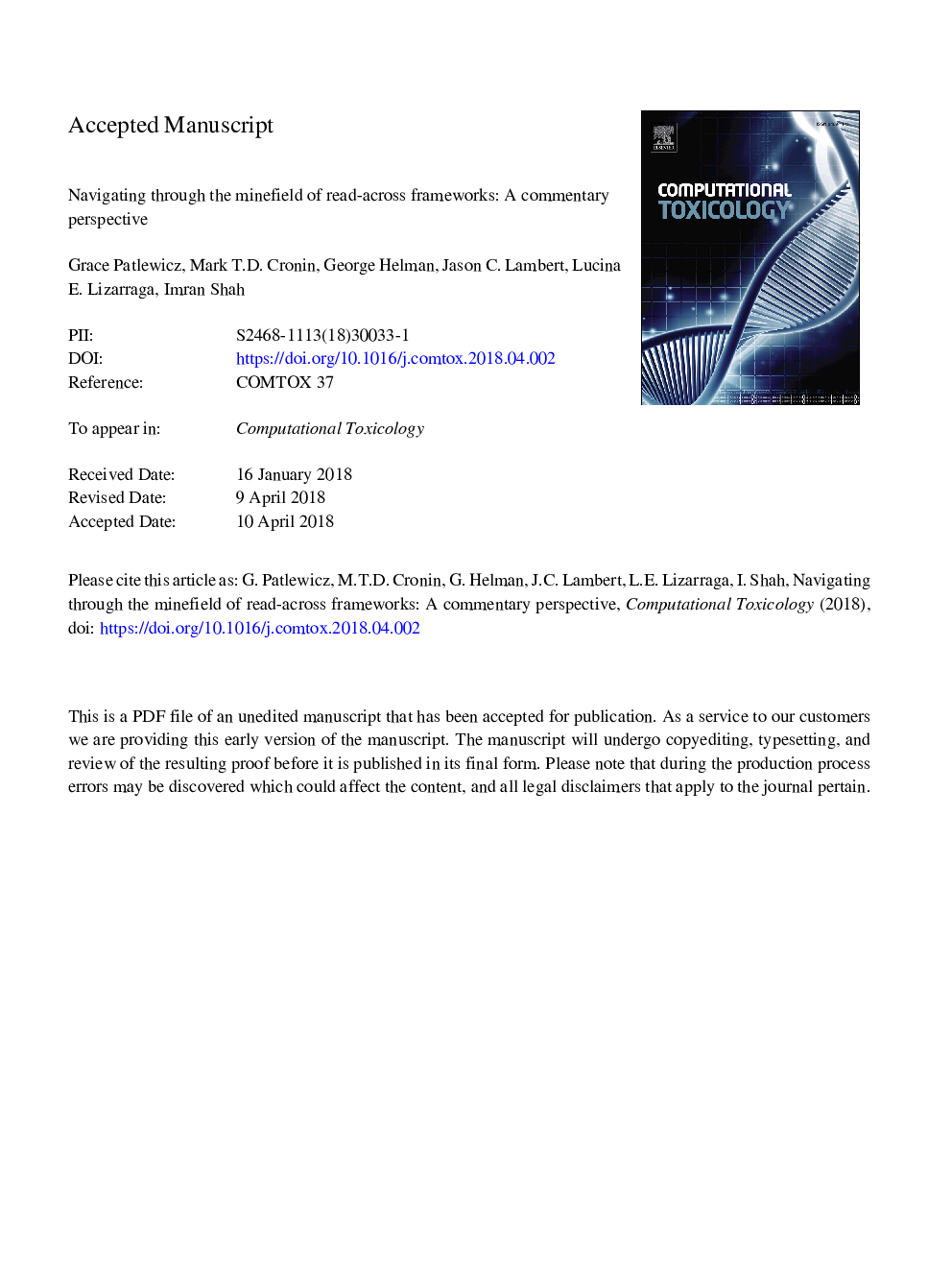| Article ID | Journal | Published Year | Pages | File Type |
|---|---|---|---|---|
| 8376745 | Computational Toxicology | 2018 | 80 Pages |
Abstract
Read-across is a popular data gap filling technique used within analogue and category approaches for both regulatory and product stewardship purposes. In recent years, there have been many efforts focused on the challenges involved in read-across development, its scientific justification and documentation for both chemical hazard and risk assessment purposes. Here, we summarise a selection of the read-across frameworks published in technical guidance documents or in the literature, and review their respective similarities and differences. There was a great deal of consensus between the different frameworks in terms of the general steps outlined and the similarity contexts considered although the terminology, decision context (chemical hazard and/or risk assessment purposes) and scope varied. A harmonised hybrid framework is proposed to help reconcile the common guiding principles and steps of the read-across process which should be helpful in expanding the scope and decision context of the existing frameworks. This harmonised framework is also intended to illustrate where generalised and systematic read-across approaches taking into consideration new approach methodology (NAM) information can be applied.
Keywords
ROCpKaQSARsOECDCAATWOECLPMOAADMEECETOCBMDLTEFLOAELECHARMSESEURAT-1PODNOAELSARRPFMIEAesAOPsAUCUS EPAUnited States Environmental Protection AgencyEuropean Chemicals AgencyEuropean UnionAOSHigh throughputabsorption, distribution, metabolism, excretionMode of actionhigh production volumeStructure-activity relationshipREACHQuantitative structure-activity relationshipsIntegrated approaches to testing and assessmentmolecular initiating eventRoot mean square errorOrganisation for Economic Co-operation and Developmentrelative potency factorHigh contentEuropean Centre for Ecotoxicology and Toxicology of Chemicalsarea under the curveNAMPoint of departureNo observed adverse effect levelLog DWeight of evidenceMolecular weightHPVAdverse Outcome Pathwayslog KowLowest observed adverse effect levelreceiver operating characteristicIATA
Related Topics
Physical Sciences and Engineering
Mathematics
Computational Mathematics
Authors
Grace Patlewicz, Mark T.D. Cronin, George Helman, Jason C. Lambert, Lucina E. Lizarraga, Imran Shah,
